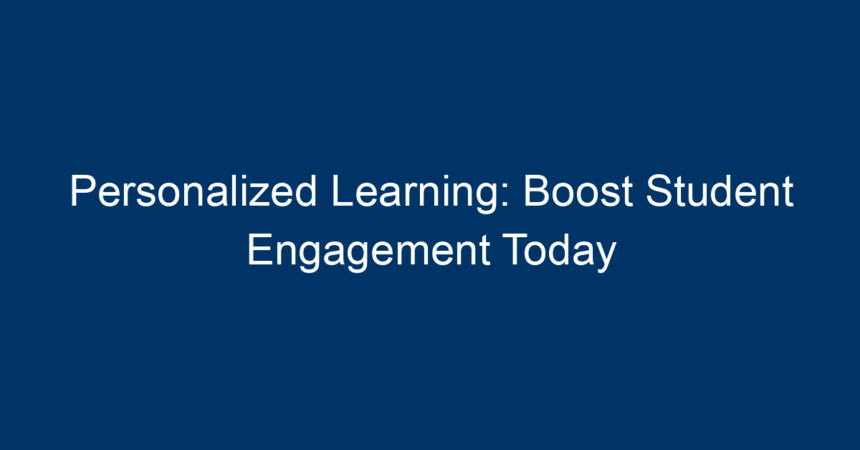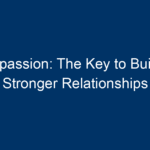In today’s educational landscape, traditional one-size-fits-all approaches are becoming increasingly obsolete. Students possess unique learning styles, interests, and paces; hence, personalized learning is gaining momentum as a compelling solution to foster engagement and enhance academic participation. This innovative approach tailors educational experiences to individual student needs, transforming how we think about teaching and learning.
In this article, we’ll explore the ins and outs of personalized learning, its benefits, effective strategies for implementation, and actionable insights to help educators boost student engagement effectively.
What is Personalized Learning?
Personalized learning refers to an educational method that tailors instructional experiences to meet the diverse needs, skills, and interests of each student. This approach involves adapting content, assessments, and learning environments to accommodate individual preferences and strengths. By prioritizing personalized learning, educators can create a more inclusive and engaging atmosphere that supports student success.
Key Components of Personalized Learning
-
Learner-Centric Approach: At its core, personalized learning places the student at the center of the educational experience, making them an active participant rather than a passive receiver of information.
-
Flexibility in Content: Personalized learning allows for a variety of learning materials, including digital resources, hands-on activities, and collaborative projects, enabling students to choose what works best for them.
-
Data-Driven Decisions: By utilizing assessments and data analytics, educators can tailor instruction to meet students’ specific needs, thereby enhancing their academic journeys.
- Individual Learning Paths: Personalized learning encourages customized pathways that allow students to progress at their own pace, moving on only when they demonstrate mastery of a subject.
Benefits of Personalized Learning
Engaging students through personalized learning yields multiple benefits that impact both academic performance and emotional well-being.
Enhanced Engagement
When students are allowed to choose the content and strategies that resonate with them, they become more invested in their learning. This heightened engagement translates to improved concentration, motivation, and ultimately, academic success.
Improved Academic Outcomes
Research indicates that personalized learning can lead to higher retention rates and better test scores. By focusing on the individual strengths and weaknesses of each student, educators can ensure that no one falls behind.
Increased Self-Directed Learning
Personalized learning encourages students to take ownership of their educational journey. This autonomy fosters critical thinking and problem-solving skills, preparing them for future challenges in both academic and real-world settings.
Strengthened Teacher-Student Relationships
Personalized learning fosters a more collaborative classroom environment. When educators understand their students better, they can build rapport and trust, contributing to a positive learning ambiance.
Strategies for Implementing Personalized Learning
Implementing personalized learning isn’t necessarily a daunting task. Here are some effective strategies to integrate this approach into your curriculum:
1. Utilize Technology Wisely
Technology can be an incredible ally in personalized learning. Platforms like learning management systems, educational apps, and adaptive learning technologies can assist educators in tailoring content and providing real-time feedback.
-
Adaptive Learning Software: Tools such as Khan Academy or DreamBox adapt to student performance, presenting challenges and resources based on individual progress.
- Digital Portfolios: Encourage students to maintain digital portfolios where they can reflect on their learning, set goals, and track their achievements.
2. Foster a Growth Mindset
Creating a culture that embraces growth mindset principles encourages students to view challenges as opportunities for growth. Teach students to appreciate effort over innate ability, allowing them to take risks and learn from their mistakes.
3. Create Flexible Learning Environments
Personalized learning thrives in an adaptable classroom setting. Arrange desks for collaboration, implement quiet zones for individual work, and use various learning materials to cater to different student preferences.
4. Encourage Collaborative Learning
Foster student collaboration through group projects and peer-to-peer learning. This not only enhances social skills but also allows students to learn from each other’s strengths and perspectives.
5. Regular Assessment and Feedback
Implement continuous and formative assessments that provide insights into students’ progress. Encourage self-assessment and peer feedback, enabling students to reflect on their learning and set personal goals.
Real-World Examples of Personalized Learning
Many schools and educational institutions have successfully implemented personalized learning strategies to experience tangible benefits. Here are noteworthy examples:
Summit Public Schools
Summit Public Schools in California emphasize personalized learning through their customizable curriculum. Students work at their own pace, leveraging technology for individualized learning projects. They have seen higher academic performance and robust student engagement metrics.
New Tech Network
The New Tech Network employs project-based learning, allowing students to pursue topics they are passionate about while cultivating 21st-century skills. Their model focuses on collaboration, creativity, and critical thinking, leading to increased student motivation.
Khan Academy
Khan Academy utilizes personalized learning principles by offering resources tailored to individual student needs. The platform allows learners to progress at their own pace, fostering a deeper understanding and retention of material.
Overcoming Challenges in Personalized Learning
Despite its benefits, implementing personalized learning can pose challenges. Here’s how to address some common hurdles:
1. Teacher Training
Ensure that educators receive the necessary training to implement personalized learning effectively. Provide professional development opportunities focused on adaptive technologies and learner engagement strategies.
2. Resource Allocation
Invest in technology and resources that promote personalized learning, including software and manipulatives. Partner with tech companies to provide cost-effective solutions.
3. Curriculum Alignment
Design curricula that prioritize flexibility. This may involve reimagining course structures and assessments to facilitate personalized pathways.
Conclusion: Taking Action Towards Personalized Learning
Personalized learning is not merely a trend; it is fundamentally reshaping the educational landscape to cater to the diverse needs of students. To boost student engagement effectively, educators must embrace this method by:
- Leveraging technology
- Creating dynamic environments
- Fostering collaboration
- Regularly assessing and iterating based on feedback
By adopting personalized learning strategies, you can transform your classrooms into vibrant learning hubs where every student feels valued, engaged, and motivated to succeed. Start today, and witness the powerful impact of personalized learning in your educational practice.
With each step towards customization and engagement, we can cultivate a future of learners prepared to navigate the complexities of the world through the power of personalized education.




